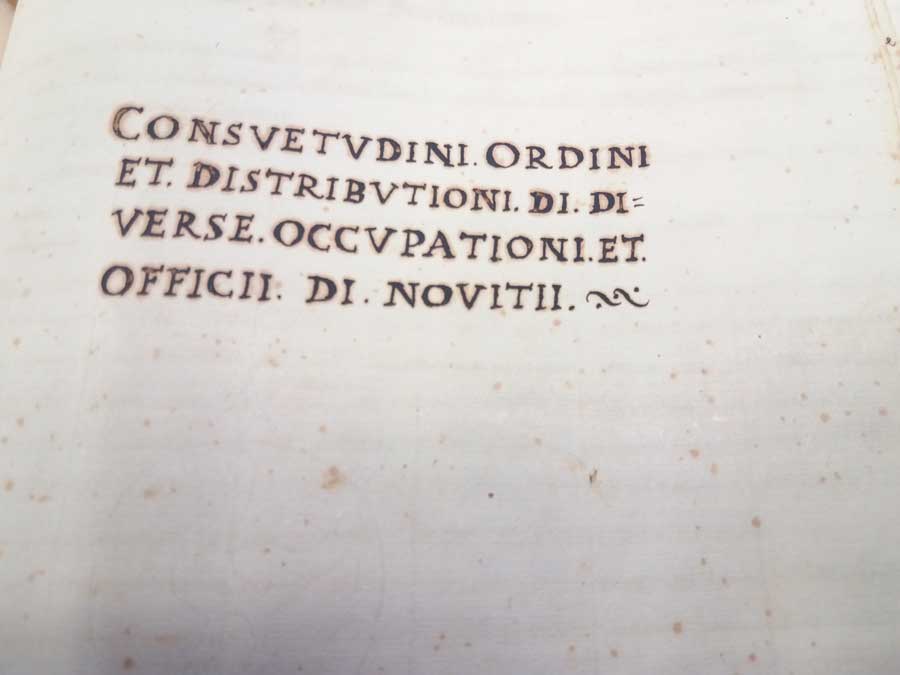Punishments and mortifications of the flesh – Over the centuries…penitents

Let us immediately reassure our readers or future novices: today corporal punishments or corporal mortifications are no longer used in the Order, Superiors rely on dialogue and personal discernment to deal with any matter with their brothers.
Fasting, punishments, penances and mortification of the flesh were, however, considered, in the past, valid tools to correct wrong behaviour, punish the violation of the Rule and reinforce discipline.
Both in the Company’s colleges and in the communities, certain punishments were used to remedy the mistakes of boys and brothers but also for repentance and prayer. Today we will not dwell on the world of boarding schools, for which we will go into further detail – we will briefly mention that in the house diaries kept in the archives there are references to fasting or the obligation to skip an afternoon recreation for the benefit of study for the more lively students.
We will dwell instead on the punishments reserved for Jesuits and the first novices; the precious source that provides us with this information is the oldest volume kept in our archives, which offers numerous points of research. This is a book of customs of the Novitiate of S. Andrea al Quirinale, the volume dates back to the last years of the 16th century.
The register is divided into two parts, in the first the timetables and daily duties of each novice and Jesuit are presented, divided by months, while the second contains the house rules, warnings for novices engaged in various chores: cooking, looking after the infirmary, arranging books in the library, cleaning.
In this very section a paragraph is devoted to Ordinary Penances for Novices.
The novices, often very young – even throughout the first half of the 20th century our novitiates hosted aspiring Jesuits as young as 15 or 16, many of whom are now faithful members of the Society – had to adapt to the new life and modify certain aspects of their character.
It was not permitted, for example, to speak at the table and for those who broke the rule the punishment was quite original since the novice had to “stand the whole table (for the duration of the meal) with his finger to his mouth pel silentio”. This as well as other rules were still applied for centuries and observed until a few decades ago, as we have already seen for the Fathers of the Gesù in Rome in the 1920s who were called to silence. The novice who made his eyes wander or who became distracted had to remain “with his eyes narrowed by curiosity”. For those who struggled to keep an adequate posture of arms and hands, an equally original punishment was foreseen: ‘with hands tied or joined together for indecent agitation’. Finally, for those who at the table or in other contexts demonstrated their inattention from the meal or the textbook, a rule as rigid as the previous ones was ready: “[stare]con il capo o collo dritto per li torcenti”.
The recitation of prayers also constituted a useful moment for penance: he was required to kiss the feet of his brethren at precise moments in the prayers or to “say an Ave Maria every time he stood with his head uncovered or kneeling in the middle of the Refectory”.
Finally, it was not uncommon for novices to eat their meal “on the floor in public on their knees” or to “stand or kneel while the martyrology is read”
Forms of penance that have been outdated for years now, not too many, however, judging from the accounts of some of the fathers who have passed into the archives, who reported punishments received up to the mid-1970s.
Maria Macchi











